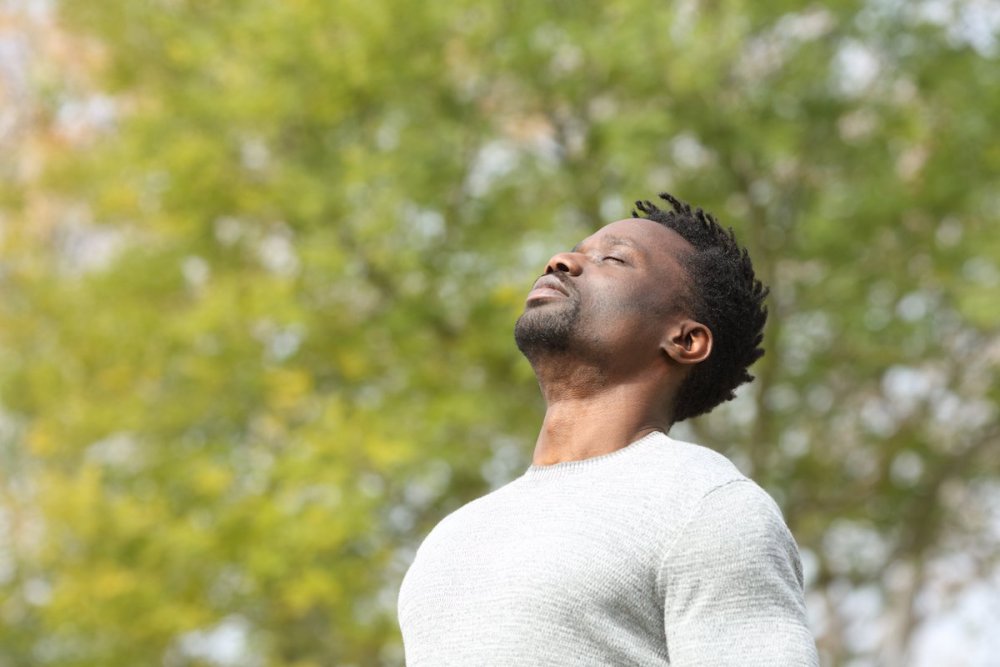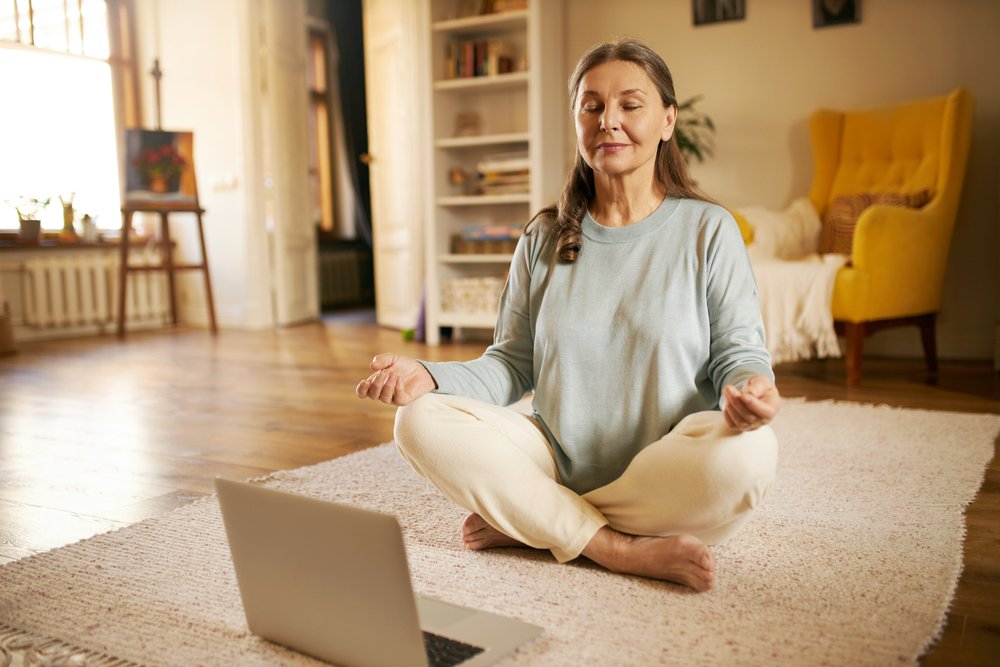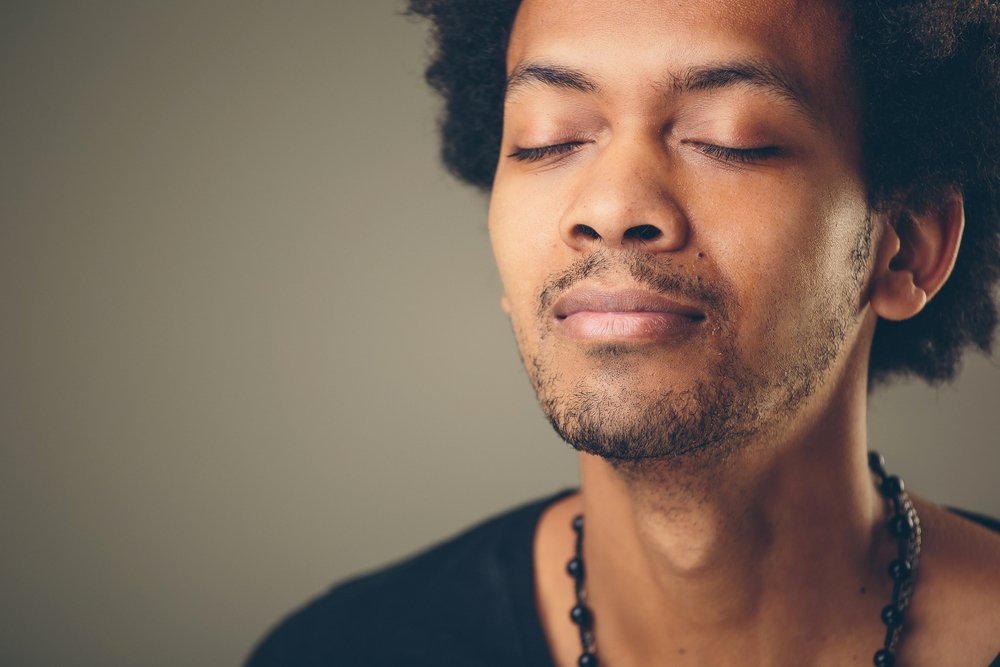Meditation teacher Ann Vrlak explains five skills that a regular meditation practice can bring to your daily life, encouraging a more peaceful and harmonious way of being.
Why do people meditate… exactly? You have probably heard about some of the many benefits of meditation, such as stress reduction, emotional balance or improving your ability to concentrate.
I had heard of them, too, when I was first learning meditation, but I also wanted to know how it would help me to manage day-to-day living: like arguments with my partner, financial worries or difficult emotions that seemed to be so hard to let go of.
Honestly, I started out as one of those people who wanted to learn meditation to escape – to “transcend” troubling everyday situations. Meditation did provide that – for me and for many people I knew. The time on the meditation cushion was “time away” from my worries and anxiety, and an immersion in a peaceful space.
It is wonderful, and therapeutic, to know that you can shift a bad mood or break a stressful train of thought. But, if meditation is only practised as “time away,” it can leave your day-to-day life and the causes of your unhappiness unchanged, and still able to disturb your peace of mind another day.
5 skills you'll learn through meditation
So, in this article, I’d like to connect some of the dots for you, to describe five skills you can learn through meditation practice and how they can help you find more resilience and become happier.
1. The skill of equanimity
Have you ever met someone who stays calm in the middle of a situation that is stressing out everyone else? They have something called equanimity. It means “evenness of mind, especially under stress.”
For example, imagine these situations: your teenager tells you about pressure from their friends to do drugs. Or, your car breaks down on the highway. Or, you have a setback at work. If you were able to find some “evenness of mind, especially under stress,” would you handle these situations differently? Would you be more able to think and feel clearly, and respond in ways you feel proud of (instead of regretful)?

Meditation develops the skill of equanimity
Being anxious or angry or frustrated are all normal reactions in situations like these and meditation shows you, step by step, how to be skillfully present with them. It teaches you equanimity: the ability to observe and tolerate all kinds of thoughts and emotions, so you don’t react impulsively to them – hurting yourself or others.
How equanimity is practised
Here is one traditional way to practise equanimity:
-
For five or ten minutes, sit quietly and notice as many of your thoughts and feelings as you can – whether they’re a small worry or a big stressor.
-
Do your best to notice them and name what they are – “worry” or “sadness.” Try not to judge or analyze them or get caught up in stories about them.
- If you practise this simple exercise for a while, you’ll notice that thoughts and feelings come in all sizes and intensities. The idea is to treat them all the same way: noticing, naming and not judging.
Learning some equanimity shows you that you can take a pause before reacting. You see your own unique patterns of thinking and feeling, like you tend to interpret a person’s silence as anger. And you begin to become an expert in yourself, to make your unconscious patterns more conscious and power up your ability to choose differently.
2. The skill of self-compassion
A surprising thing about equanimity is that it leads to more self-compassion. Isn’t that interesting?
When you’re a little less attached to your thoughts and feelings, you can see them more clearly. And that brings into focus, maybe for the first time, how they upset you, or disconnect you from others when that’s the opposite of what you really want.
“Being anxious or angry or frustrated are all normal reactions and meditation shows you, step by step, how to be skillfully present with those feelings.”
Self-compassion creates a safe and healing environment for your meditation. Would you want to look at difficult feelings and situations if you knew you were going to be criticized? Practising the skill of self-compassion shows you how to be a reliable friend to yourself, one that cares and helps you put things in perspective.
Watch this very interesting short talk about “overcoming objections to self-compassion” by expert Kristen Neff – you may recognize some of your own!
In my experience as a student and teacher of meditation, I’ve found self-compassion to be the single most difficult thing for people to understand and practice. And that is another cause for compassion, isn’t it? That so many of us find it hard or even unappealing to treat ourselves with kindness.
If you commit to trying self-compassion practice for a period of time (in spite of all the objections your mind will throw at you!), you may be amazed at how much better you feel and how much more open you become to all of your experience and to other people, too.
How self-compassion is practised
You can add a few minutes of self-compassion into your day or into another meditation practice with these two simple steps:
-
Like the equanimity practice, notice as much of your experience as you can, including physical sensations, like tension in your neck. Notice and name whatever you find, including negative self-talk or criticism about it, and move on to the next thing you sense.
-
Then, care about what you notice. Respond with curiosity and kindness, either in an energetic way – by feeling curious and kind – or by saying caring phrases out loud or to yourself, such as:
- “I hear you. That sounds hard, I’m sorry.”
- “Tell me more about what that’s like.”
- “Stay as long as you like. I’m here.”
RELATED: How to practise self-compassion – 6 proven techniques
Inner conflict and negative self-talk are exhausting. When you practise self-compassion, especially in the middle of a challenging moment, I guarantee you will learn things about yourself that have been just out of reach. You may feel a bit of opening and softness that comes from truly caring about yourself. And, no big surprise here, you will develop more empathy, becoming more understanding of other people’s perspective and pain, as well.
3. The skill of physical relaxation
Physical relaxation is incredibly important.
We have all developed habits of tensing certain parts of our bodies when we’re upset or stressed. And those physical patterns can then become part of a cycle of emotions, thoughts and physical tension that perpetuates anxiety and depression.

Try deep, calming breaths to create relaxation shutterstock/shurkin_son
When this kind of cycle is set in motion, you’re on automatic pilot. You have no “space” to intervene or make a new, positive choice.
But, you can break into this cycle by physically relaxing in the moment. In the middle of a traffic jam, take a few deep, calming breaths. Worried about a presentation at work? Do the same.
Physical relaxation exercises are powerful because they work on two fronts:
-
They activate the calming processes and chemicals in your brain.
- They take your attention away from thoughts and feelings that make up your anxiety or depression cycle, onto the relaxation exercise.
How to practise physical relaxation
Thankfully, you can find many meditative relaxation practices online. Choose one or two that help you focus on body awareness or breath practice. Here is a great one from Tara Brach, and another powerful exercise.
RELATED: What Is a Sound Bath Meditation and What Are Its Benefits?
Also, you can try this simple soft belly breath. For a few minutes, feel the sensations of your breath in your belly, feeling the up and down motion. Centre your attention there, rather than higher up in your chest or throat.
“Inner conflict and negative self-talk are exhausting. When you practise self-compassion, especially in the middle of a challenging moment, you will learn things about yourself that have been just out of reach.”
As you breathe, equalize the four parts of your breath to a count of four: breathe in for a count of four, hold for four, exhale for four and hold for four.
4. The skill of being with thoughts and feelings
This skill has been implied throughout this article, and it is the next step, once you have gained some equanimity, self-compassion and the ability to relax.
With these skills, you can relate in increasingly positive and healthy ways with how you think and feel. This skill will be a huge boost in your ability to:
-
Be self-aware.
-
Recognize just how much some old ways of thinking and feeling are holding you back from connecting with yourself and with others.
-
Choose new, empowered thoughts that will help you grow in ways you may have wanted to for a long time. It’s important to know: don’t simply tell yourself you “should” believe these thoughts. Try them and be curious, watching for changes in how you think and feel.
-
Be with, understand and respond to your emotional life in healing ways. When it comes down to it, our emotions are like the air we breathe: they colour, not only how we feel, but what we see and what we do.
- Relate to people in conscious, healthy and connecting ways.
How to practise skillfully being with thoughts and feelings skillfully
All of the mini practices described so far will help you practice this skill!
5. The skill of cultivating silence
Last, but definitely not least, is the skill of cultivating silence. If you practise some of the skills I’ve described, you will learn a lot about the “things” in your life: your work and career, emotions, relationships, beliefs. You will also develop the skill to recognize what is behind those things, so to speak, a sense of quiet knowing.
Psychologists and scientists have a lot to say about how our plugged in, multitasking lifestyles are hard on our brains and our happiness. The ability to recognize and enjoy silence is becoming a dying art.

Meditate on silence and peace shutterstock/UfaBizPhoto
But all of us need to know how to turn off, to find a place of rest and rejuvenation. The beauty of meditation is it will show you how to find this place – any time and anywhere.
Many traditional meditations see this cultivation of silence as a core skill, as the source of balance, intelligence and compassion each of us can draw on.
RELATED: The Power of Silence: 10 Benefits of Cultivating Peace and Quiet
You can take a minute, any time, to be with difficult thoughts and feelings in the middle of a conflict, and touch into silence. For a moment, nothing needs to be done, but rest in inner quiet and refresh yourself. And see what comes next.
The takeaway: skills you'll learn through meditation
Together, these five skills strengthen your ability to respond wisely to life situations, rather than reacting in habitual, impulsive ways. You create a pause where you can remember your intentions and your values, for your own well-being and the well-being of the people you care about. You create space for your best self to see things in big ways, and to act in big ways too.
The life skills you can learn from a meditation practice have virtually no limits. The key is to keep one thing at the front of your mind: how does this practice, insight or understanding relate to the important things in my life, like my sense of self-worth, repeating negative thoughts and feelings, my achievements, my self-expression, my loved ones and my happiness?
Keep connecting those dots and, over time, your meditation will become much more than something you do to reduce stress or relax. It will become a way to weave your deep strengths and joy into whatever you do.
Main image: shutterstock/Pheelings media
happiness.com | The fine art of being: learn, practise, share
Are you a happiness.com member yet? Sign up for free now to enjoy:
■ our happiness magazine with practical life tips
■ share and support in our happiness forum
Written by Ann Vrlak
 Ann Vrlak is Founder of OneSelf Meditation and a meditation practitioner for over 25 years. She’s a Certified Meditation Teacher for adults and for children (the best job ever!). She loves to share how the perspective and practice of meditation can support people with their everyday stresses and on their journey of self-discovery.
Ann Vrlak is Founder of OneSelf Meditation and a meditation practitioner for over 25 years. She’s a Certified Meditation Teacher for adults and for children (the best job ever!). She loves to share how the perspective and practice of meditation can support people with their everyday stresses and on their journey of self-discovery.




Join the conversation
You are posting as a guest. If you have an account, sign in now to post with your account.